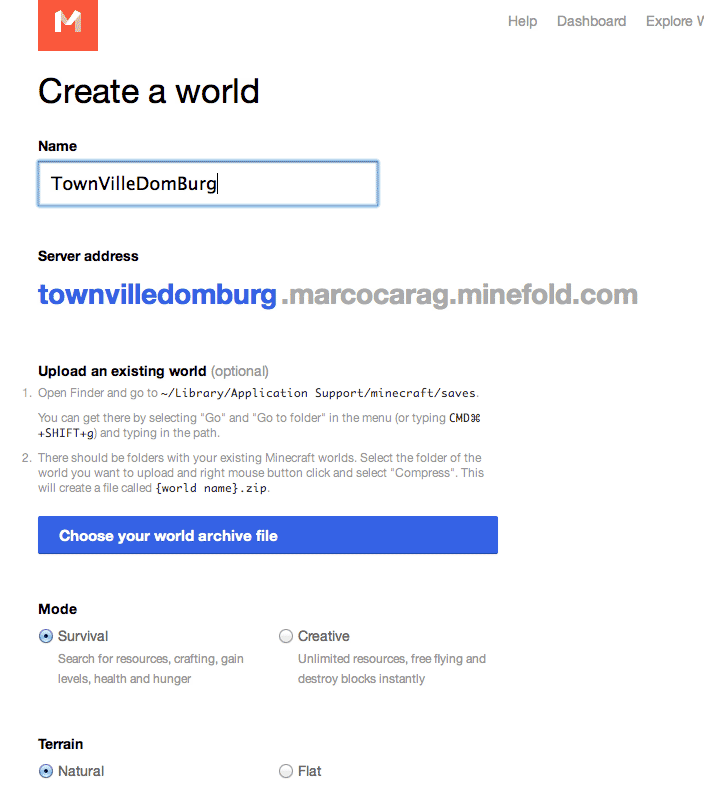Minefold for Casual Minecrafting
The sandbox smash, Minecraft, is really fun. Setting up, port-forwarding to, and maintaining a multiplayer server, all while moderating against and booting out “griefers” really sucks. So, don’t do any of that, and use Minefold, instead.
I love Minecraft. After my curiosity was piqued by a random video of someone accidentally burning their blocky house to the ground, I nabbed the alpha version, and have moved countless blocks since. I love it especially because there’s no objectives, no missions, no timers; I can do whatever I want, at whatever pace I want. A true sandbox.
When it comes to sharing Minecraft worlds, options are slightly limited. There’s Minecraft server software that can be run on a machine for sharing on a local network. Or the wider Internet with the right port-forwarding router setup. I’d rather pay a bit to have all that hardware and setup handled for me.

Amazing, then, what the hosting service Minefold offers for free: ten hours of play a month on an unlimited number of Minecraft worlds. It turns out ten hours a month is way beyond ample for my casual playing needs. If somehow it’s ever not enough, there are unlimited play “Pro” options starting at $15 for three months, and getting cheaper with six- and twelve-month commitments. After a brainless signup (designer Chris Lloyd did an amazing job with Minefold’s elegant design), you can upload your existing locally-created worlds, or easily start a new one. At its most basic, it’s the perfect way to cloud-store your worlds. But there’s more to it than just the basics.
Minefold has two major strokes of genius, both setting it apart from other competitors that I considered back when I was looking. The first is that you’re charged for play time — not for the servers. What this means is that you don’t need to worry about capacity costs or anything of the sort; if you have a dozen other players participating, however much they play is their own problem and their own bill, just the same as with your own participation. And on that note, allowing other players in is akin to adding them as a friend on Facebook; they put in a request, and you approve it. There’s no other way about it, which makes preventing “griefers” (in the “speak”) an easy thing to do, if you keep approvals close to your chest.

The second stroke of genius is how worlds are shared. To start, your world and the literally thousands of other worlds created by other users have wonderful “profile” pages, centering around a truly awesome Google Maps-driven isometric pan-able and zoom-able view of the world as it’s so far been explored. This is actually an incredibly useful feature; not only have I spent countless minutes panning and zooming around finding things in this map of my world that I didn’t notice when actually wandering in Minecraft, but I’ve often kept it open to use as a real map while I played the game simultaneously.
Obviously, it’s also a wonderful way to experience what others have created. Thumbnails of these isometric maps can be browsed in an “Explore” page, and you can click into any world’s “profile” page. And to top it off, you can clone any world you come across to claim as your own. This means that you can experience other people’s creations without having to trouble yourself with getting approval as a participant in their exact original of that world. Seriously, Minefold solves all the problems of safe and easy multiplayer Minecraft with its browsing, cloning and approval system.
Did I mention that all of this is free? You don’t pay a dime until you’ve surpassed ten hours of play time in a given month. What a deal, especially for the casual player. For making multiplayer Minecraft painless, brainless, griefer-free, and just plain pleasurable to use — even when not playing — Minefold is the way to go.


